The Checker Maven
Martins' Meatchopper

The antique, hand-operated meat chopper shown in the photo above looks rather wicked, and we'd advise you to keep your all of your fingers well clear when operating this particular instrument. In a somewhat similar manner, you'll need to watch your fingers as you move the pieces in today's installment from Willie Ryan's Tricks Traps & Shots of the Checkerboard. Willie calls it Martins' Meatchopper, and with good reason. Let's let him tell us more.
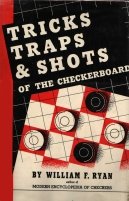
"Perhaps Robert Martins' chief claim to checker fame is premised on the fact that he was the favorite adversary of James Wyllie, and he played the role with ever-modest but tenacious propriety. These venerable old-timers played seven matches, totaling 388 games, with Martins winning one match, losing four, and drawing two. Here is a fine Martins masterpiece on the Bristol, which I learned when I was a boy.
| 11-16 | 27-23 | 9-14 |
| 24-20 | 11-16 | 29-25 |
| 16-19 | 20-11 | 5-9 |
| 23-16 | 7-16 | 22-18---A |
| 12-19 | 25-22 | forming the |
| 22-18 | 4-8 | diagram. |
| 8-11 | 18-15 |
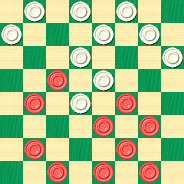
WHITE
Black to Play and Win
B:W32,31,30,28,26,25,23,21,18,15:B19,16,14,10,9,8,6,3,2,1.
A---Loses, and leads to the stroke that follows. White can draw easily with: 31-27, 9-13, 22-18, 1-5, 18-9, 5-14, 27-24, 16-20, 23-16, 20-27, 32-23, 10-19, 16-12 (if 25-22 is played, the draw is attained with 8-12), 2-7, 23-16, 8-11, 25-22, 11-20, 26-23, 6-10, 22-18, 14-17, etc."
Can you operate the meat chopper without slicing your fingers in the process? Work it all out and then chop your mouse on the Read More button to see the solution.![]()
Professor, What's Your Opinion On This?

The position shown just below arose in a game nearly 80 years ago between a certain Phildelphian named Simon Becker, and Professor Guy H. Garwood of McComb, Ohio. Now, McComb is and always has been a small village (its current population is under 2,000) and it has never had a college or university. Perhaps Prof. Garwood taught at nearby University of Findlay, a large and historical school in Findlay, Ohio; but we were unable, in the time we had available, to find out anything about the good Professor except that he was a championship-caliber player who scored some notable wins in big-time tournament play. (The photo above is obviously not of Professor Garwood.)
How, then, did he get himself into the predicament the White forces appear to suffer from? We don't know that answer, either, but we would like to at least metaphorically ask the Professor for his opinion on the position. Professor, it's your move with White, what result?
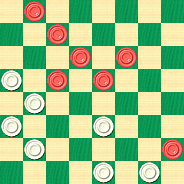
WHITE
White to Play, What Result?
W:W32,31,25,23,21,17,13:B28,15,14,11,10,6,1.
Yet another thing we don't know is if you, our reader, happen to be a Professor yourself. But that's really immaterial. In fact, if you solve this problem correctly, we'll give you the title of Honorary Professor of Checkers. With an incentive like that, we know you'll want to solve it, so do so, and click on Read More to verify your solution.![]()
The Noble Vine

The noble vine and its delicious fruits! The sweet, ripe grapes are in their own right a delightful treat; and the wine that might be made from them can reach loftly heights of pleasure for the palate.
But don't indulge quite yet, for after all, we have our monthly Checker School session to attend first. It, too, is a product of the noble vine; or more precisely, turn of the century checkerists T. Noble and R. Vine. Today they bring us a pair of positions that look similar but in fact are as different as white wine and red wine.
| T. NOBLE | R. VINE |
| WHITE | WHITE |
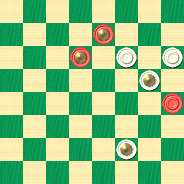 | 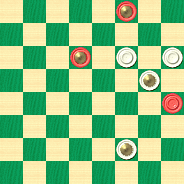 |
| BLACK | BLACK |
| Black to Play and Draw | White to Play and Win |
| B:W22,21,K17,K6:BK26,K23,13. | W:W22,21,K17,K6:BK30,K23,13. |
Black is a man down in both positions, yet he seems to have an advantage in mobility in both cases also. What's the difference? How can he manage to pull out a draw in the first one, but not in the second?
That's what's standing between you and (at least possibly) some sophisticated refreshments at the moment. Solve the problems, and then click on Read More to check the fruits of your labor against the published solutions. You'll also see two sample games, complete explanatory notes, and a very interesting "Advice for Beginners" article from a news column of yesteryear.![]()
Checkers in Hawai`i
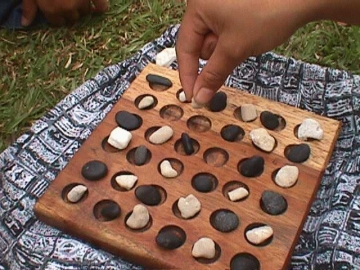
Shown above are the board and pieces for the game Konane, also commonly know as "Hawaiian Checkers" even though the game has nothing at all to do with checkers! Still, it's an excellent game of skill, and has been played in Hawai`i since ancient days.
Seemingly less common in Hawai`i is our own game of checkers; we can't find any history of formal competition and there is certainly no officially recognized state champion. But local checker fan Geoffrey Pang is about to change all that. He's organizing and sponsoring an honest-to-goodness checker tournament in Mililani, on the island of O`ahu, on July 24, 2010, at the Mililani Town Center. The tournament is informal (and not an official American Checker Association event). If you're on O`ahu on the 24th, we encourage you to play. There is no entry fee. Simply contact Geoff at gpang_abm@msn.com to let him know you're coming, and show up at 9:00 AM. The tournament will take place at the beautiful outdoor location shown below. The Checker Maven will be on hand to cover the event, and we'll publish the results in a forthcoming Saturday edition.

Now, for today's column, we really couldn't come up with a Hawaiian-themed checker problem. But after a little thought, we decided that given Hawai`i's storied history of kings, queens, and other royalty, a problem involving many kings might be just the ticket; and fortunately, we were able to locate one. It's diagrammed below, and a festival of kings it surely is.
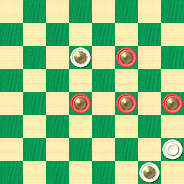
WHITE
White to Play and Win
W:WK10,28,K32:BK11,K18,K19,K20.
This one is really easy enough to have been a fifteen second speed problem, but in Hawai`i, we're hardly ever in a hurry, so take your time, then click on Read More to see the royally simple solution.![]()
4th of July Special
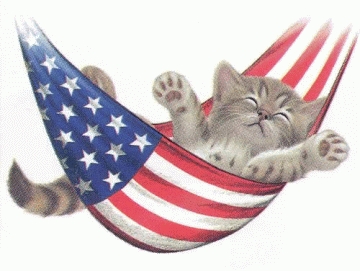
The Fourth of July, American Independence Day, is one of our favorite national holidays, as we've said in these columns many times before. We're unabashed patriots, happy and proud to celebrate the anniversary of America's birth each and every year.
The Checker Maven, when marking a special occasion, invariably turns to the dean of American problemists, Tom Wiswell. In keeping with that tradition, we present a problem that Mr. Wiswell says is one of his earliest, taken from actual play. He calls it practical and pleasing; we call it spectacular, providing a display of checkeristic fireworks to go along with the aerial fireworks traditional on the Fourth of July.
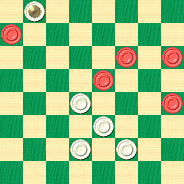
WHITE
White to Play and Draw
W:W27,26,23,18,K1:B20,15,12,11,5.
Black is going to press the White man on 27, at the very least. How can White save the day? Take this one along with you to the Fourth of July picnic, and solve it with your checker friends; then be sure to click on Read More to check your solution. Enjoy the fireworks, both on and off the board!![]()
